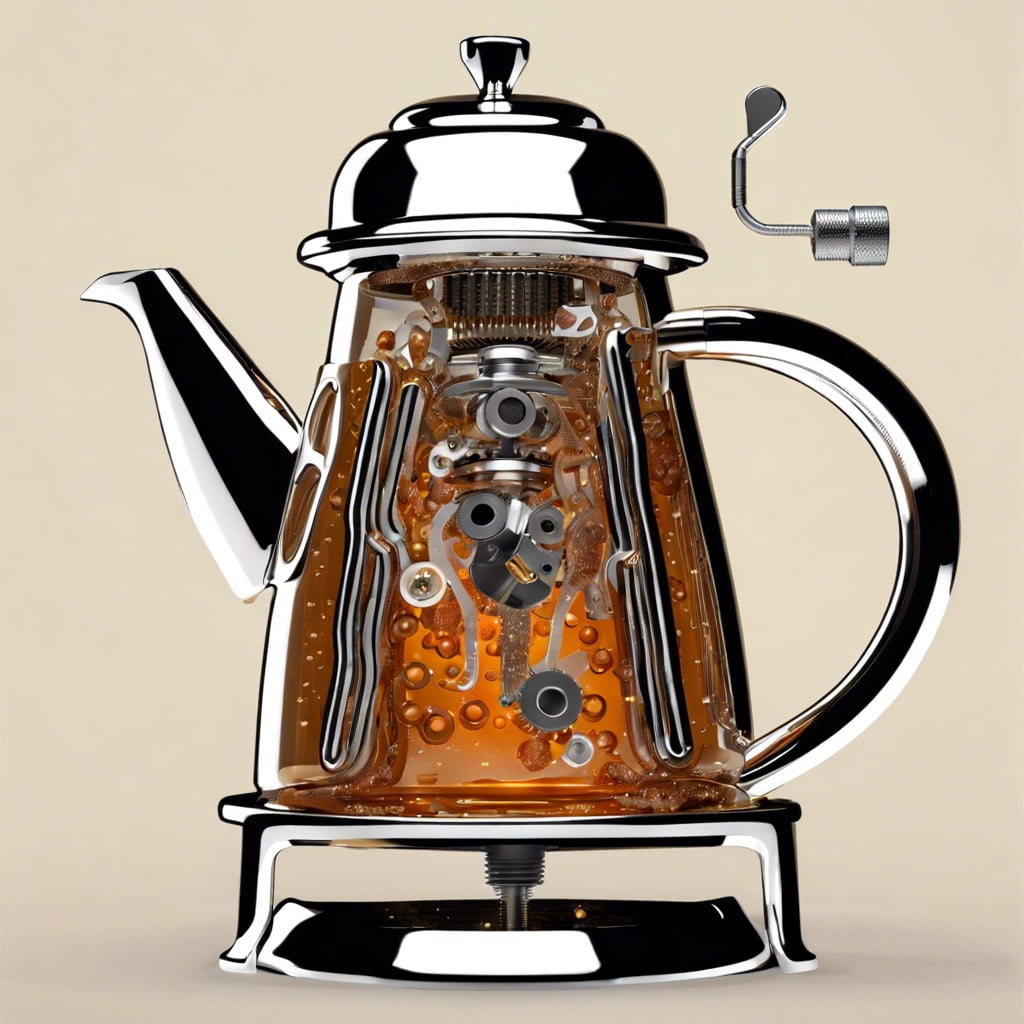Discover how a percolator brews your coffee by continuously cycling boiling water through grounds to extract bold flavors.
Components of a Percolator

Percolators consist of a few key parts that work together to brew your coffee. At the base, there’s a water chamber where you add cold water. Above this, a vertical tube extends to the top of the percolator. Attached to this tube is the coffee chamber, where you place your ground coffee. The coffee chamber often has small holes or a filter to keep the coffee grounds from falling through.
The lid of a percolator often has a transparent knob. This allows you to watch the magic happen – or at least see when your coffee reaches that rich, amber color. As the water in the bottom chamber heats up, it’s forced up the tube, sprinkles over the coffee grounds, and brews into delicious coffee. Trust the process. Magic happens here!
Steps of the Brewing Process
Meet the percolator, the slightly noisy yet charming hero of the old-school coffee brewing scene. Like a small steam engine chugging along on your stove, it transforms water and coffee grounds into a hearty cup of coffee.
First, cold water gets poured into the percolator’s chamber. Next, the magic happens when the heat source—be it a stove or an electric element—kicks in. The water heats up and is compelled to defy gravity. With nowhere to go but up, the water travels through a narrow tube.
At the summit of this mini-journey, it splashes over a spreader and baptized with coffee grounds housed snugly in a metal basket. Here’s the fun part: the water, now flavored with coffee, drips back down to mingle with its unflavored brethren. This repeated pilgrimage from base to top enhances the flavor each round, a bit like the water’s rite of passage to becoming coffee.
Through this cyclical dance, the brew grows stronger with each pass, guided by nothing but physics and a bit of coffee magic. Just keep an ear out for that cheerful gurgling sound—it’s a sign your coffee is nearly ready. Once it quiets down, your robust brew is set to meet your mug.
Types of Percolators
Electric percolators automate the brewing cycle and often include features like keep warm settings. Ideal for users looking for consistency with minimal effort.
Stovetop percolators require a heat source, like a stove or campfire. They’re preferred by those who enjoy a hands-on approach to control strength and flavor or need a portable option.
Microwave percolators are designed from microwave-safe materials. They offer a quick brewing solution but are less common and can vary widely in brewing quality. Each type caters to different preferences and scenarios, influencing flavor and convenience.
Percolator Vs Drip Coffee Maker: Differences
Percolators and drip coffee makers might look like distant cousins at a family reunion, but they brew coffee quite differently. A percolator recycles boiling water through coffee grounds using gravity, while drip coffee makers delicately shower hot water over the grounds. This method matters because it affects how the coffee tastes and feels.
With a percolator, expect a stronger, sometimes more bitter cup, as the repeated cycling can over-extract flavors. Drip machines, however, are often champions of consistency and gentle extraction, resulting in a smoother, more nuanced cup.
Moreover, percolators are generally more hands-on and robust, ideal for camping or outdoor activities. Technophiles and ease-seekers might lean towards the modern drip coffee maker, which often features programmable settings and other conveniences.
Understanding these differences can help in choosing the right machine that best suits your morning ritual or your wilderness adventure.
Percolator Vs Drip Coffee – Taste
Percolators brew coffee using a more intense process involving recirculating boiling water over coffee grounds multiple times. This creates a robust, often bolder flavor, characterized by a distinct richness that some coffee enthusiasts swear by. The heat involved can also release more oils and flavors, leading to a full-bodied cup.
On the flip side, drip coffee makers brew by dripping hot water through coffee grounds, allowing gravity to do most of the work. This method typically results in a cleaner, smoother cup of coffee, which can highlight more subtle flavors in the coffee beans. It’s generally considered gentler, preventing the over-extraction and bitterness sometimes noted in percolated coffee.
In essence, if you’re looking for a jolt of boldness, the percolator might be your best buddy. If a gentler, nuanced flavor is what you’re after, then the drip coffee maker is your go-to. Pour, sip, and let your taste buds decide!